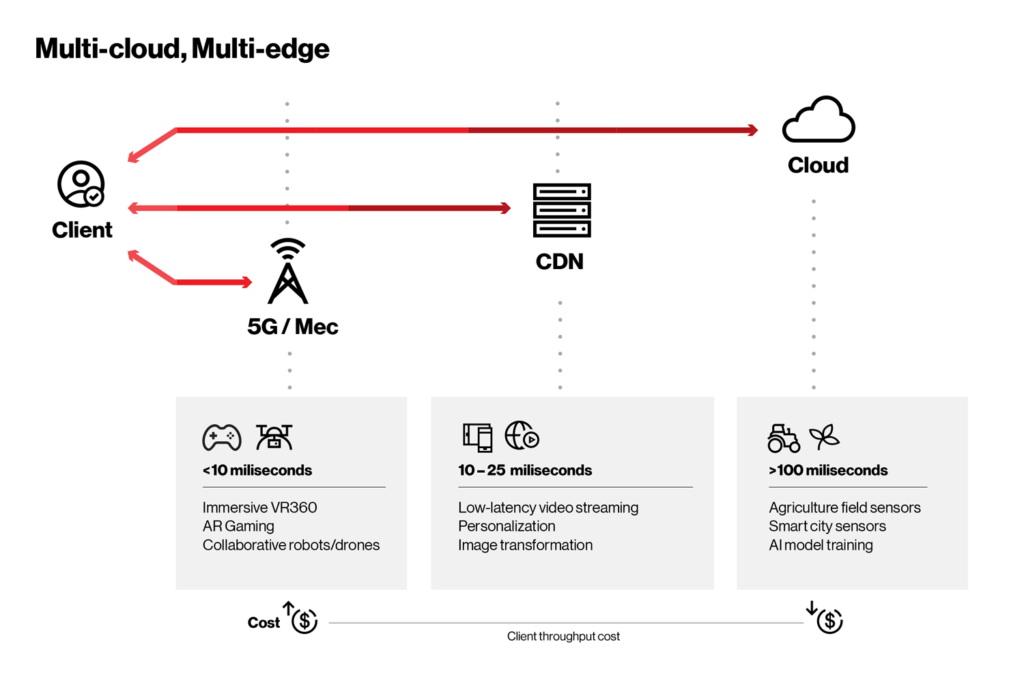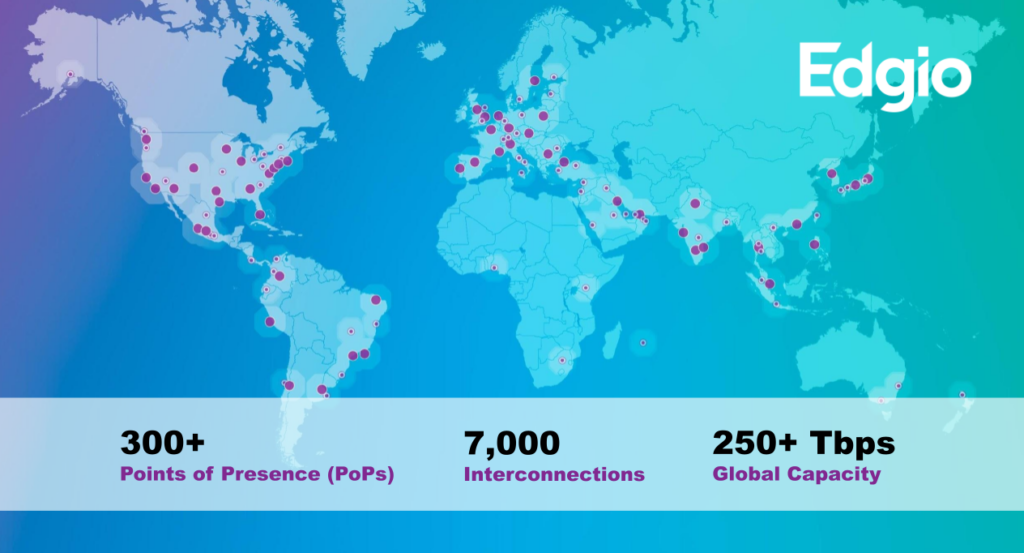We are at the cusp of the Fourth Industrial Revolution, where digital, physical, and social worlds will become intertwined beyond our imagination. This new world of technological innovation will alter how we live, work, and communicate. Companies will be forced to evolve their technology approach in building and delivering next-generation products and experiences that match customer demand for high-quality, real-time information and content.
Edge computing is a fundamental component of this innovation and will empower companies to deliver ultra-low latency and high-quality solutions to their end users. But what exactly is edge computing? It’s become a popular term that can mean many different things depending on who you are talking to or which application or use case you are considering. So let’s dive in.
Edge computing defined
Edge computing enables computing or processing of data to be done at or near the source (i.e., closer to the end-user).
However, multiple factors influence the way edge computing can be used, including:
The use case or the problem you are trying to solve
Expectations around speed (latency) and quality of service
Cost
For example, the mobile virtual reality (VR) experience will require ultra-low latency (<10ms), but the cost and throughput to deliver it will be high. Smart city sensors may allow for additional latency, but the cost to deliver data will be lower.
The other reason why edge computing is so complex is that there are multiple edges to choose from. The trick to figuring out which edge you need is to determine the right speed and quality of experience for your particular use case while also aligning with business expectations and the costs you are willing to pay.
The multiple edges can be categorized as follows:
Device Edge
5G Edge
CDN Edge
The Cloud

Device Edge
At the Device Edge, end-user devices handle the compute workloads. Here, there is significantly less computing and storage available, but the use case allows for near real-time data processing. For example, the latency, privacy, and bandwidth requirements for self-driving cars make it impractical to retrieve the data from the Cloud. Edge computing at the Device Edge is also expensive due to upfront hardware costs and the use of proprietary technology. These deployments are also much harder to scale. This presents an opportunity for companies to migrate their Device Edge workloads to the CDN Edge, reducing costs while maintaining scale.
5G Edge
The 5G Edge offers the lowest latency possible (typically less than 10ms, but higher bandwidth up to 1 Gbps). The 5G Edge contains the MEC (multi-access edge computing) platform, enabling computing and storage close to end users. Examples of use cases that require the 5G Edge/MEC platform are the Internet of Things (IoT), the Industrial IoT (IIoT), augmented and virtual reality (AR/VR), real-time video streaming, industrial manufacturing, and robotic surgery.
The ability to support these use cases is hindered by the need for greater 5G adoption (both at home and on mobile) and the finalization of industry standards. Until this occurs, the CDN Edge can be an intermediate solution that bridges the gap from the cloud to the 5G Edge. Visit this page to learn more about the Verizon 5G Edge and MEC platform.
CDN Edge
The CDN Edge offers more computing capability than the 5G Edge/MEC and can also support high bandwidth, but the latency is slightly increased, ranging from >10ms to
Companies moving their applications and workloads from the Cloud to the CDN Edge will benefit from lower latency and, ultimately, a better customer experience. The Verizon Media, now Edgio, delivery network offers 250+ Tbps of egress capacity and is deeply peered with over 7,000 last-mile networks, providing global scale, performance, and speed.

The Cloud
The Cloud offers even greater compute and storage capabilities. However, the latency is also greater ranging from >100ms to 500ms based on the application or use case. There is no infrastructure needed to run your workloads in the Cloud, and cloud providers like Amazon, Azure, and Google typically offer pay-as-you-go models, which further reduce costs. Examples of cloud computing include video processing, big data analytics, content storage, and AI model training.
Conclusion
Edge computing is a perfect solution for companies looking to develop new, high-performant applications or if they want to reduce their cloud services cost as they move their existing applications and workloads from the cloud closer to end users. But, there are multiple edges, from the Device Edge to the cloud computing edge. Deciding which edge to choose depends on your use case and requirements for speed, quality of user experience, and cost. The CDN Edge offers significant opportunity for many use cases where latency tolerances are between >10 ms and <25ms. It can also act as a bridge for companies who want to migrate workloads from the device edge to achieve scale or for companies who want to run their applications at the 5G Edge/MEC platform once it is more widely deployed.
 GigaOM Radar Edge Platform Leader & Outperformer 2024 |
GigaOM Radar Edge Platform Leader & Outperformer 2024 | 






